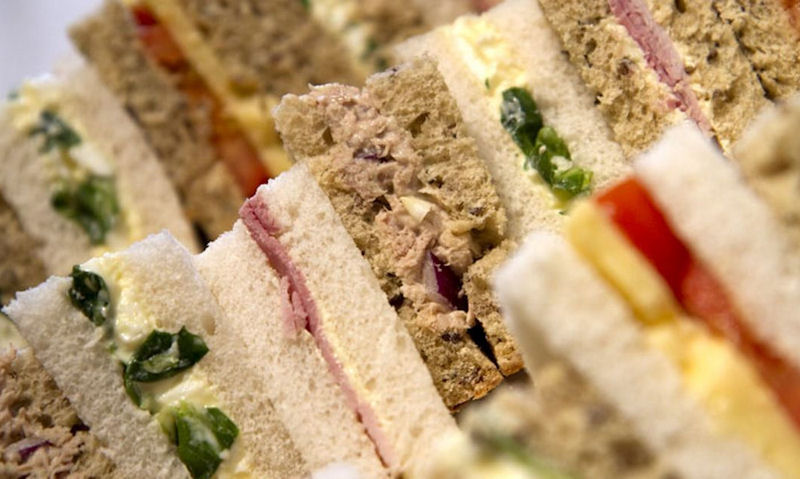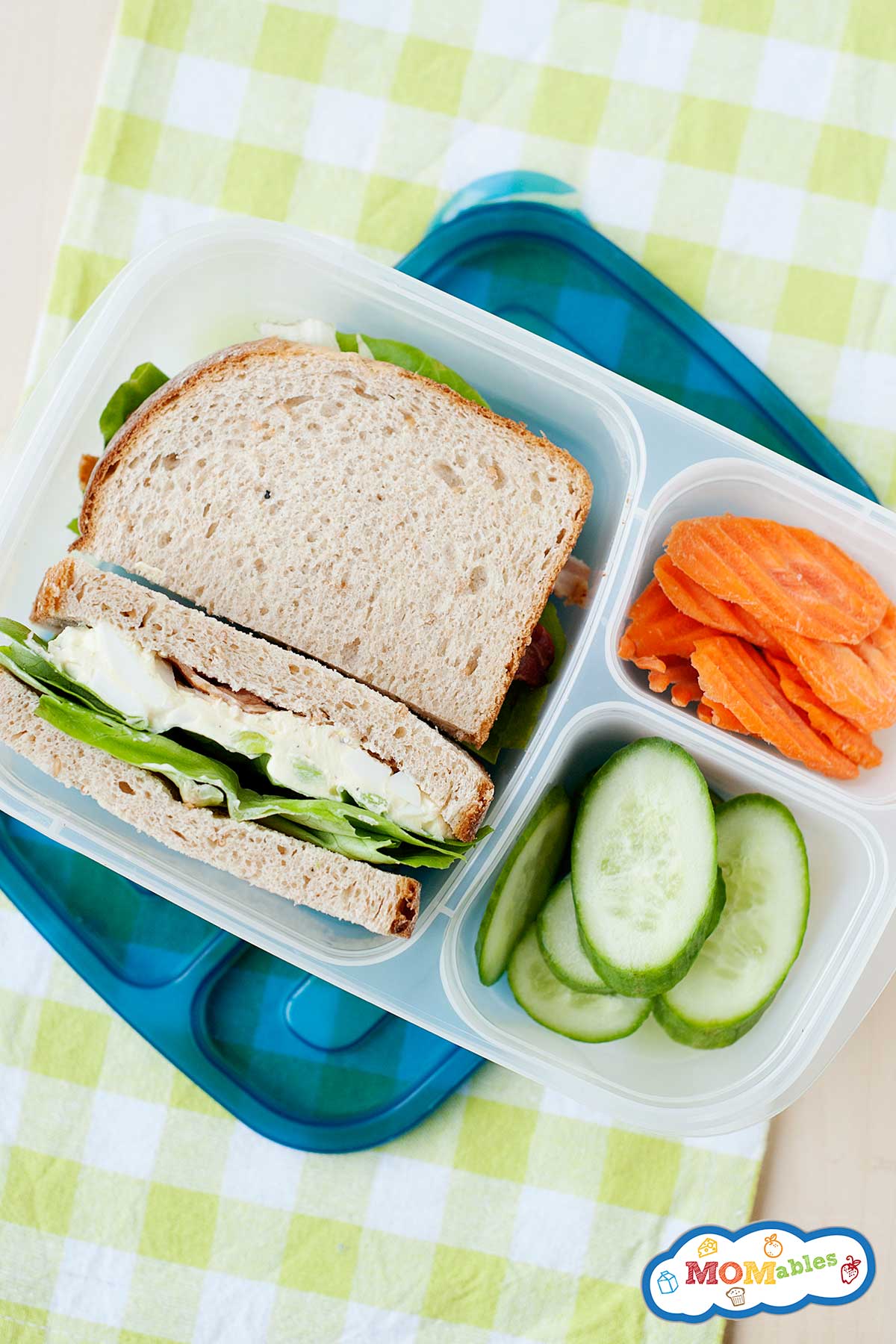You can pack a good cold sandwich for lunch and keep it fresh with the assembly and packing tips below.
You’ll also learn how to avoid soggy sandwiches and keep them cold and at their best!
Whether it’s a classic PB&J sandwich, a sandwich with deli meats, or a tuna salad, you’ll want to make sure it’s packed properly in the lunch bag so you can enjoy it hours later.
Less is more For peanut butter sandwiches, for example, spread the same amount of peanut butter on both slices of bread and distribute the jelly in the middle. This helps the texture of the bread be consistent and avoids the soggy jelly side.
Keep “wet” ingredients away from bread If your sandwich includes sliced tomatoes, tuna salad, or chicken salad, add a barrier like lettuce or a slice of cheese between the moist ingredient and the bread so the bread doesn’t get soggy.
Avoid zip bags Zip bags, while convenient, don’t protect the sandwich from the other items in the lunch bag and can lead to squished sandwiches by lunch.
Avoid excess room in the container Make the container fit the sandwich by selecting one that doesn’t leave a lot of room on the sides for the sandwich to move around and the ingredients to fall out. Kids are notorious for not being gentle with their sandwiches.
Pack spreads and liquids separate If your sandwich is heavy on a dressing, like a salad sandwich, pack that in a separate small lidded container.
Don’t wrap it in plastic. Use a paper-based bag or wrap, or one of those cloth-and-beeswax wraps. Don’t wrap it too tightly. If the sandwich can’t “breathe” the moisture in it will accumulate, making it soggy.

How to Assemble a Sandwich So It Stays Fresh
Did you know that the order you assemble the ingredients when you make a sandwich for later is almost as important as how it’s packed? Yes, you heard that right! From the bottom up here is how to build a sandwich:
- Bread: your base of the sandwich.
- Spread: a thin layer of mayo, hummus, pesto or mustard helps the bread stay moist and adds flavor. Pick one, the other goes on the top slice.
- Barrier layer: whether it’s sliced cheese or a lettuce leaf, this layer protects the bread from a moisture-containing ingredient.
- Deli meat or filling: this is the heart of the sandwich (main ingredient) it can be deli meat, tuna salad, egg salad, chicken salad, etc.
- Wet ingredient: tomatoes, pickles, and the usual suspects that lead to soggy sandwiches go here.
- Barrier layer: another ingredient like lettuce or cheese not used below to protect the bread from the wet ingredient.
- Spread: an optional thin layer of an ingredient goes here. Ex: if you like mayo and mustard, use one here the other in the top layer.
- Bread: your top layer to close the sandwich.
How to Pack a Cold Sandwich
After making a sandwich and placing it inside an air-tight container, pack it inside an insulated lunch bag for optimal freshness until lunch. Sandwiches with perishable foods or whose quality can be impacted by changes in temperature should be packed along with an ice pack or a gel pack.
You can also freeze a juice box or water bottle for this purpose and place it inside the lunch bag. If the bag will be outside in hot temps, it’s recommended you place two cold sources inside the same bag.

How to Keep Sandwiches from Getting Soggy in a Lunchbox
FAQ
How long will a sandwich last in a lunchbox?
How do you keep sandwiches fresh for 5 hours?
How do you keep a sandwich fresh for lunch?
To ensure your sandwich stays fresh until lunchtime, it’s important to store it properly. You can use an insulated lunch box or cooler pack to keep the sandwich cool and prevent it from spoiling. It’s also a good idea to pack any condiments or spreads separately and assemble the sandwich just before eating to prevent it from becoming soggy.
How do you keep sandwiches from getting soggy in a lunch box?
To keep sandwiches from getting soggy in a lunch box, try spreading a thin layer of butter or mayonnaise on the bread before adding any moist ingredients like lettuce or tomatoes. This creates a barrier that helps prevent the bread from absorbing too much moisture.
How do you store a sandwich?
Pack the sandwich in Tupperware to keep it secure. Many sandwiches will be structurally delicate, depending on the type of bread used. If your sandwich is small enough, consider storing it in Tupperware to keep it fresh and secure. Avoid putting anything heavy on top of the sandwich.
How do you pack a sandwich?
If the sandwich will be consumed soon, the sky’s the limit. Now that you’ve picked the right kind of sandwich to pack, here are a few tips on the best way to construct and layer it: Bread: If you hate sogginess, choose rolls or crusty bread. For sliced sandwich bread, consider toasting it to keep moisture out.
